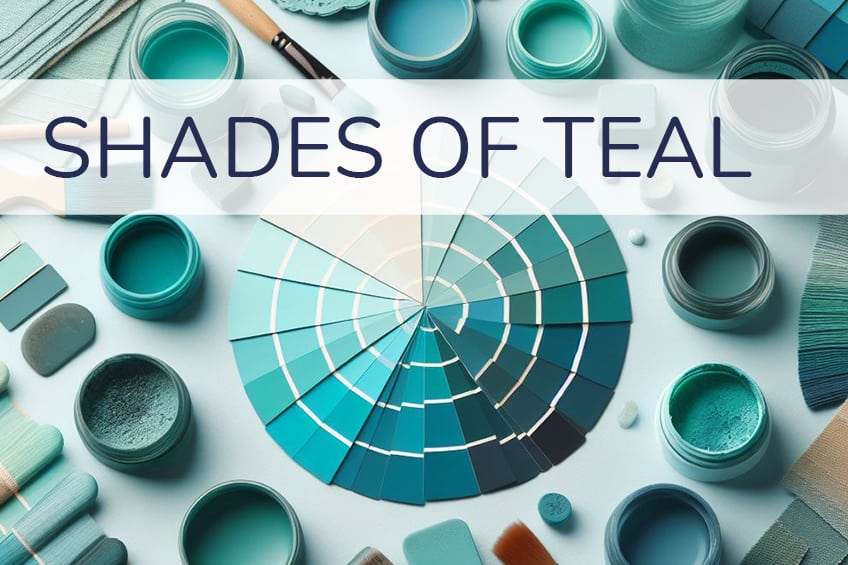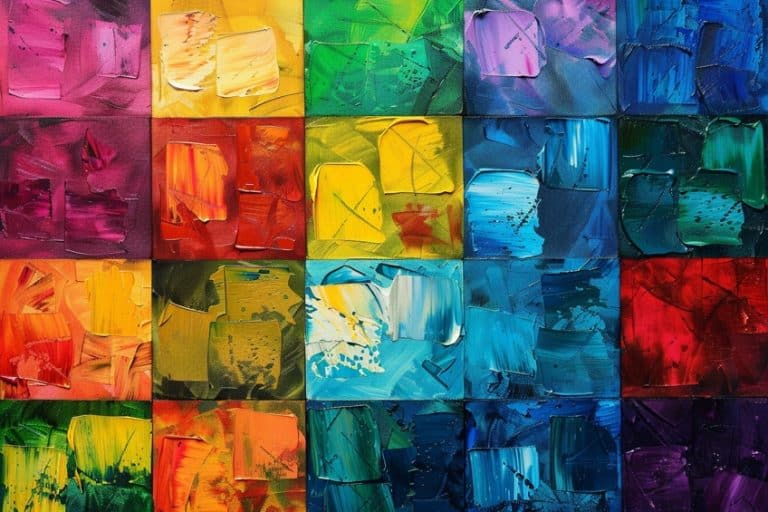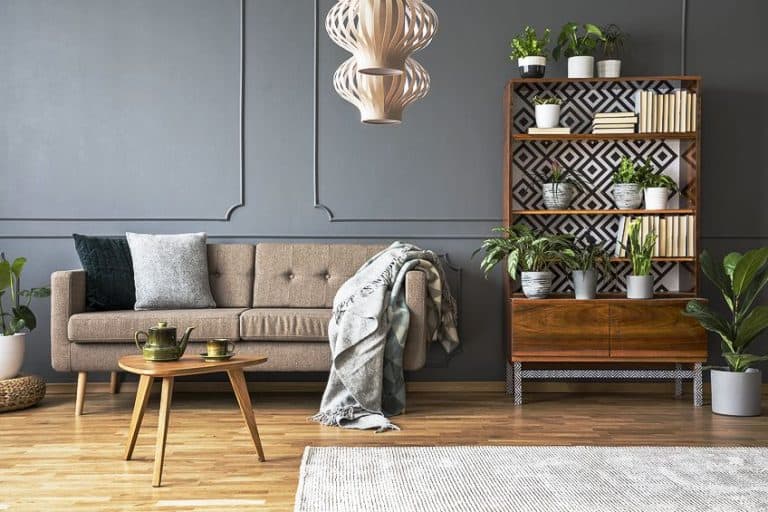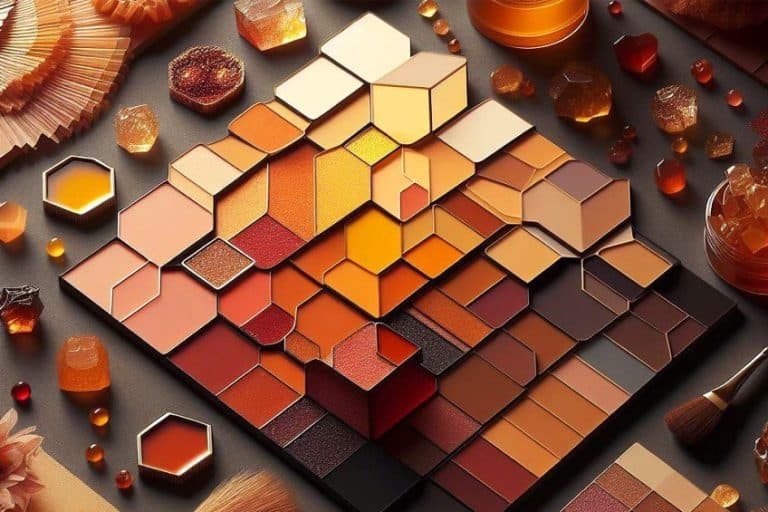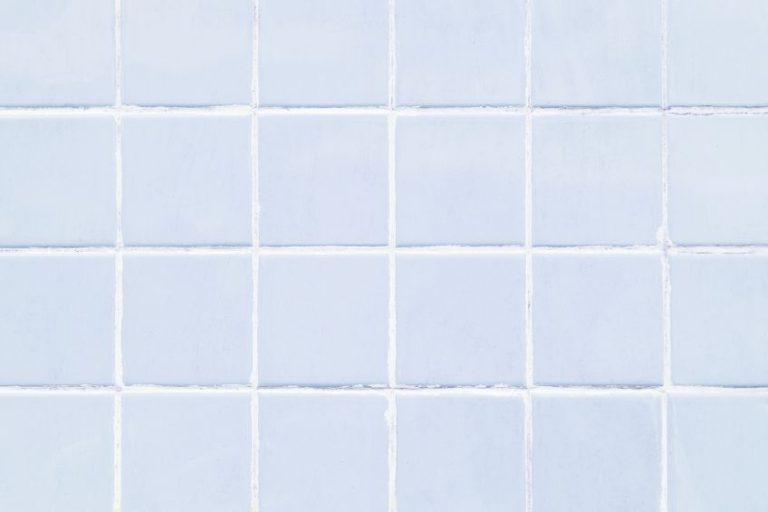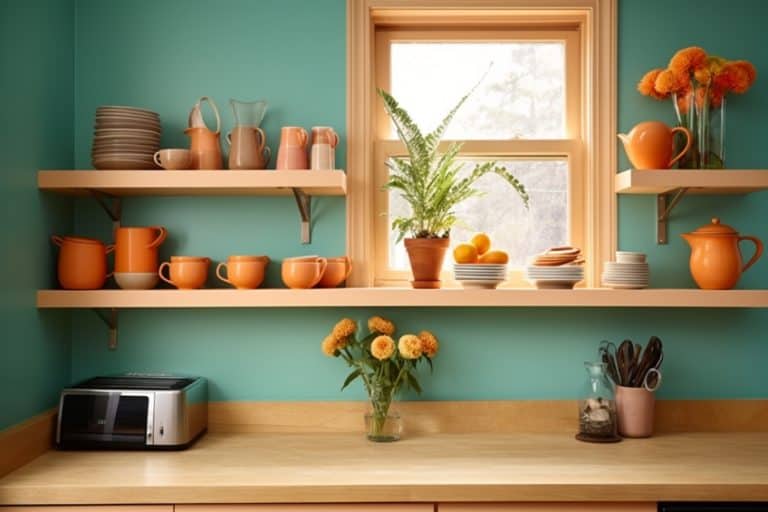38 Shades of Teal Color – Get Inspired by These Tones
There is something truly luxurious when it comes to the color teal, many versions of royalty have favored this color for the richness of its beauty, and adorned themselves in lavish silks from all over the world that had been dyed by the pigments that we know to make the color teal. Teal is a color that can be described as a combination of blues and greens, similar to that of cyan but is darker. We have created a curated list of all 38 existing shades of teal, including descriptions, visuals and color codes.
38 Different Shades of Teal
We can compare the impact of the color teal to that of shallow waters or tropical beaches. The more vibrant light green teal can induce a clear, or invigorating feeling. We can also expect a calmer, more sophisticated feeling from the deeper shades.
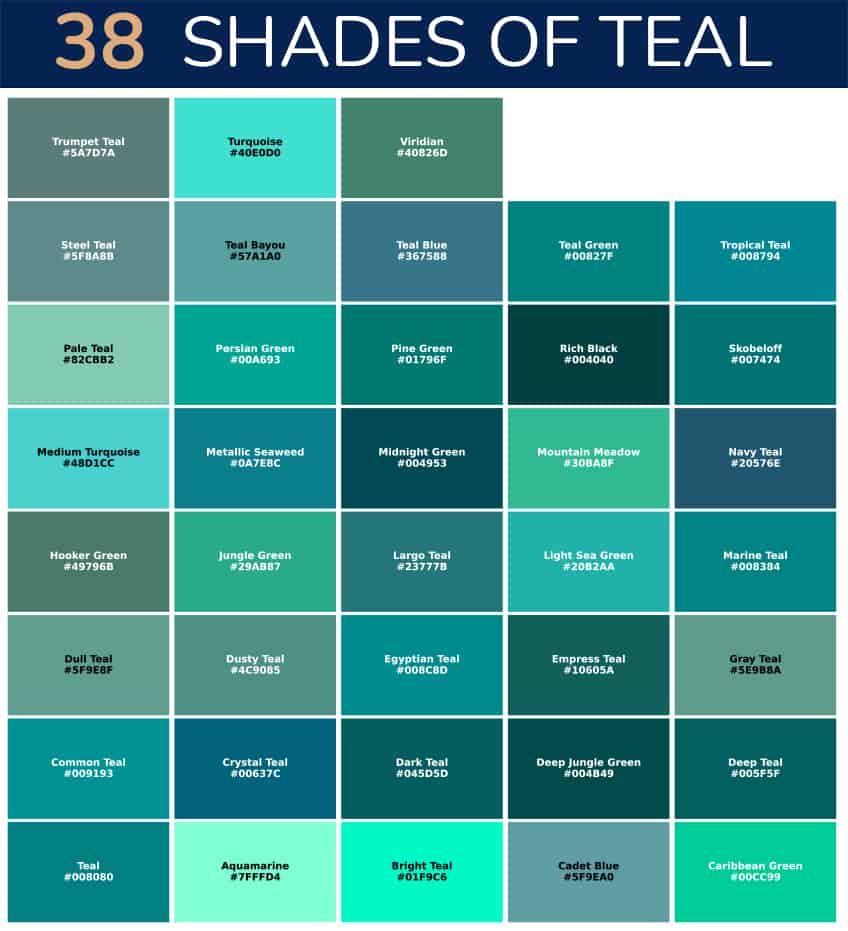
Teal
For most people, this is the color that they think of when they hear the name, teal. This version of teal is slightly lighter than the teal color above. Common teal is the shade of teal first observed around 1817 on the Eurasian teal duck.
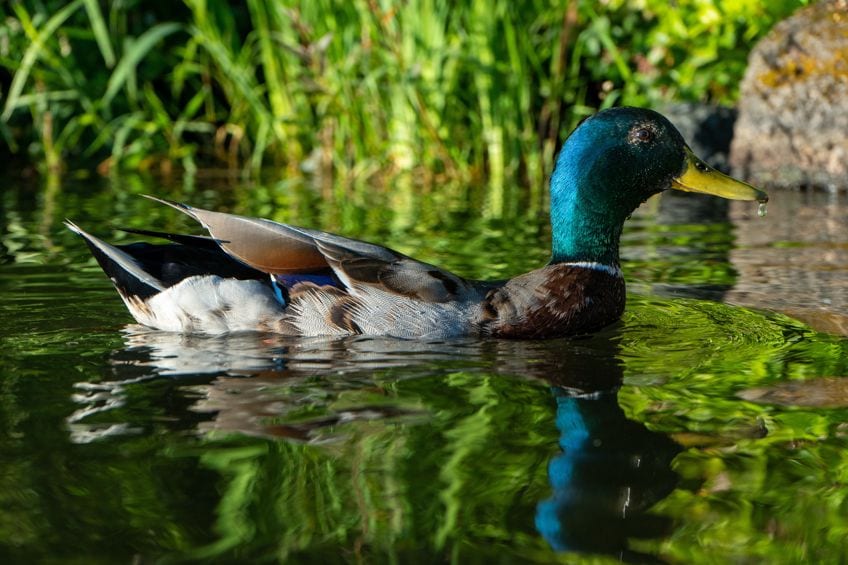
| Shade | Teal Hex Code | CMYK Teal Color Code | RGB Teal Color Code | Teal Color |
| Teal | #008080 | 100, 0, 0, 50 | 0, 128, 128 |
Aquamarine
A light, crystalline blue with a touch of green, reminiscent of clear, sunlit ocean waters, symbolizing tranquility and clarity.
| Shade | Teal Hex Code | CMYK Teal Color Code | RGB Teal Color Code | Teal Color |
| Aquamarine | #7FFFD4 | 50, 0, 17, 0 | 127, 255, 212 |
Bright Teal
This teal is highly saturated, its vibrancy is similar to that of turquoise. It works well with greens and blues. It is said that light and bright teal colors encourage creativity. If you want to add contrast to this color, you could try reddish-orange colors.
| Shade | Teal Hex Code | CMYK Teal Color Code | RGB Teal Color Code | Teal Color |
| Bright Teal | #01F9C6 | 100, 0, 20, 2 | 1, 249, 198 |
Cadet Blue
A muted blue with gray undertones, capturing the discipline and calmness associated with military cadets.
| Shade | Teal Hex Code | CMYK Teal Color Code | RGB Teal Color Code | Teal Color |
| Cadet Blue | #5F9EA0 | 40, 1, 0, 37 | 95, 158, 160 |
Caribbean Green
A bright, tropical green, like the shallow waters of the Caribbean Sea, vibrant and full of life.
| Shade | Teal Hex Code | CMYK Teal Color Code | RGB Teal Color Code | Teal Color |
| Caribbean Green | #00CC99 | 100, 0, 25, 20 | 0, 204, 153 |
Common Teal
A standard teal color, balancing blue and green equally, versatile and widely recognized.
| Shade | Teal Hex Code | CMYK Teal Color Code | RGB Teal Color Code | Teal Color |
| Common Teal | #009193 | 100, 1, 0, 42 | 0, 145, 147 |
Crystal Teal
A clear, bright teal, like light shining through crystal-clear water, combining clarity with a sense of vitality.
| Shade | Teal Hex Code | CMYK Teal Color Code | RGB Teal Color Code | Teal Color |
| Crystal Teal | #00637C | 100, 20, 0, 51 | 0, 99, 124 |
Dark Teal
A deep, intense teal, richer and more profound than standard teal, perfect for adding depth and sophistication.
| Shade | Teal Hex Code | CMYK Teal Color Code | RGB Teal Color Code | Teal Color |
| Dark Teal | #045D5D | 96, 0, 0, 64 | 4, 93, 93 |
Deep Jungle Green
A dense, dark green, evoking the lush foliage of a tropical jungle, full of mystery and natural abundance.
| Shade | Teal Hex Code | CMYK Teal Color Code | RGB Teal Color Code | Teal Color |
| Deep Jungle Green | #004B49 | 100, 0, 2, 71 | 0, 75, 73 |
Deep Teal
A more intense version of teal, with greater depth and richness, suggesting elegance and depth.
| Shade | Teal Hex Code | CMYK Teal Color Code | RGB Teal Color Code | Teal Color |
| Deep Teal | #005F5F | 100, 0, 0, 63 | 0, 95, 95 |
Dull Teal
A muted, subdued version of teal, less vibrant but more versatile, suitable for a refined, understated look.
| Shade | Teal Hex Code | CMYK Teal Color Code | RGB Teal Color Code | Teal Color |
| Dull Teal | #5F9E8F | 38, 0, 0, 53 | 74, 119, 119 |
Dusty Teal
A soft, muted teal with a grayish tone, like teal that has been softened by a layer of dust, gentle and subdued.
| Shade | Teal Hex Code | CMYK Teal Color Code | RGB Teal Color Code | Teal Color |
| Dusty Teal | #4C9085 | 47, 0, 7, 44 | 76, 144, 133 |
Egyptian Teal
This Egyptian teal color expands over to green on the color chart for shades of teal. You can see this color teal in Ancient Egyptian artifacts. In paintings of the Egyptian era, you can see this color used in makeup and body art.
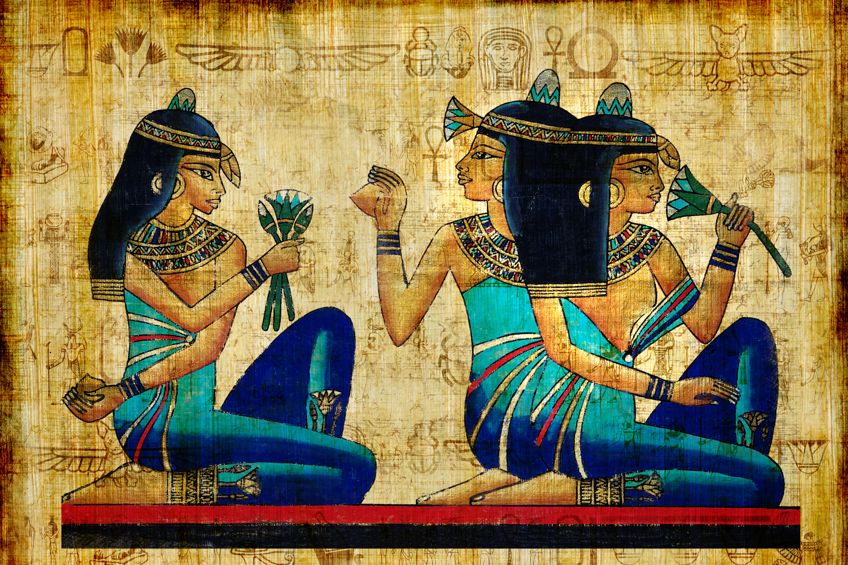
| Shade | Teal Hex Code | CMYK Teal Color Code | RGB Teal Color Code | Teal Color |
| Egyptian Teal | #008C8D | 100, 1, 0, 45 | 0, 140, 141 |
Empress Teal
A regal, sophisticated teal, as if made for royalty, embodying elegance and power.
| Shade | Teal Hex Code | CMYK Teal Color Code | RGB Teal Color Code | Teal Color |
| Empress Teal | #10605A | 83.33, 0, 6.25, 62.35 | 16, 96, 90 |
Gray Teal
A blend of teal and gray, offering a more neutral, subdued version of the color, sophisticated and modern.
| Shade | Teal Hex Code | CMYK Teal Color Code | RGB Teal Color Code | Teal Color |
| Gray Teal | #5E9B8A | 39, 0, 11, 39 | 94, 155, 138 |
Hooker Green
A deep, rich green, named after the botanical illustrator William Hooker, evocative of lush, natural foliage.
| Shade | Teal Hex Code | CMYK Teal Color Code | RGB Teal Color Code | Teal Color |
| Hooker Green | #49796B | 40, 0, 12, 53 | 73, 121, 107 |
Jungle Green
A vibrant green that captures the essence of a rainforest, lively and full of natural energy.
| Shade | Teal Hex Code | CMYK Teal Color Code | RGB Teal Color Code | Teal Color |
| Jungle Green | #29AB87 | 76, 0, 21, 33 | 41, 171, 135 |
Largo Teal
A medium teal, reminiscent of a serene, expansive ocean, conveying a sense of peace and spaciousness.
| Shade | Teal Hex Code | CMYK Teal Color Code | RGB Teal Color Code | Teal Color |
| Largo Teal | #23777B | 71.54, 3.25, 0, 51 | 35, 115, 123 |
Light Sea Green
A pale, soft green with a hint of blue, like light reflecting off shallow sea waters, peaceful and refreshing.
| Shade | Teal Hex Code | CMYK Teal Color Code | RGB Teal Color Code | Teal Color |
| Light Sea Green | #20B2AA | 82, 0, 5, 30 | 32, 178, 170 |
Marine Teal
Marine teal can lend itself more towards blue than green. It creates a sense of calm and adventure in space, reminding us of shallow waters, or Moroccan tiled bathrooms on an island resort.
| Shade | Teal Hex Code | CMYK Teal Color Code | RGB Teal Color Code | Teal Color |
| Marine Teal | #008384 | 100, 1, 0, 48 | 0, 131, 132 |
Medium Turquoise
A balanced, vibrant blue-green, like classic turquoise stone, embodying both energy and tranquility.
| Shade | Teal Hex Code | CMYK Teal Color Code | RGB Teal Color Code | Teal Color |
| Medium Turquoise | #48D1CC | 66, 0, 2, 18 | 72, 209, 204 |
Metallic Seaweed
A unique teal with a metallic sheen, like seaweed glimmering underwater, combining natural elements with a touch of glamour.
| Shade | Teal Hex Code | CMYK Teal Color Code | RGB Teal Color Code | Teal Color |
| Metallic Seaweed | #0A7E8C | 93, 10, 0, 45 | 10, 126, 140 |
Midnight Green
A very dark, almost black, green, like the depths of a forest at midnight, mysterious and enveloping.
| Shade | Teal Hex Code | CMYK Teal Color Code | RGB Teal Color Code | Teal Color |
| Midnight Green | #004953 | 100, 12, 0, 67 | 0, 73, 83 |
Mountain Meadow
A bright, fresh green, reminiscent of high-altitude meadows, invigorating and full of life.
| Shade | Teal Hex Code | CMYK Teal Color Code | RGB Teal Color Code | Teal Color |
| Mountain Meadow | #30BA8F | 74, 0, 23, 27 | 48, 186, 143 |
Navy Teal
A dark teal with a hint of navy blue, creating a deep, sophisticated hue, perfect for a commanding presence.
| Shade | Teal Hex Code | CMYK Teal Color Code | RGB Teal Color Code | Teal Color |
| Navy Teal | #20576E | 71, 21, 0, 57 | 255, 0, 0 |
Pale Teal
A light, soft teal, airy and delicate, offering a subtle hint of color.
| Shade | Teal Hex Code | CMYK Teal Color Code | RGB Teal Color Code | Teal Color |
| Pale Teal | #82CBB2 | 36, 0, 12, 20 | 130, 203, 178 |
Persian Green
A rich, vibrant green with a hint of blue, reminiscent of Persian jewels and opulent tapestries.
| Shade | Teal Hex Code | CMYK Teal Color Code | RGB Teal Color Code | Teal Color |
| Persian Green | #00A693 | 100, 0, 11, 35 | 0, 166, 147 |
Pine Green
A deep, dark green, like the dense needles of a pine tree, symbolizing endurance and timelessness.
| Shade | Teal Hex Code | CMYK Teal Color Code | RGB Teal Color Code | Teal Color |
| Pine Green | #01796F | 100, 0, 8, 53 | 1, 121, 111 |
Rich Black
A deep, intense black, more profound than standard black, evoking a sense of mystery and depth.
| Shade | Teal Hex Code | CMYK Teal Color Code | RGB Teal Color Code | Teal Color |
| Rich Black | #004040 | 100, 0, 0, 75 | 0, 64, 64 |
Skobeloff
A deep teal, similar to dark teal, but with a more pronounced blue undertone, strong and distinguished.
| Shade | Teal Hex Code | CMYK Teal Color Code | RGB Teal Color Code | Teal Color |
| Skobeloff | #007474 | 100, 0, 0, 54 | 0, 116, 116 |
Steel Teal
This color of teal will work in your favor when combining it with gray. It can have a calming and sometimes clinical effect to it, making it great for a laundry room. It gives you a sense of growth from the accentuated green undertone.
| Shade | Teal Hex Code | CMYK Teal Color Code | RGB Teal Color Code | Teal Color |
| Steel Teal | #5F8A8B | 32, 1, 0, 45 | 95, 138, 139 |
Teal Bayou
A dark, swampy teal, like the waters of a bayou, mysterious and deep.
| Shade | Teal Hex Code | CMYK Teal Color Code | RGB Teal Color Code | Teal Color |
| Teal Bayou | #57A1A0 | 46, 0, 1, 37 | 87, 161, 160 |
Teal Blue
Teal blue is timeless. Extremely popular in the 1950s and 1960s. It has the ability to round off a space with a bit of complexity and drama, making it easy to incorporate it into any decor theme.
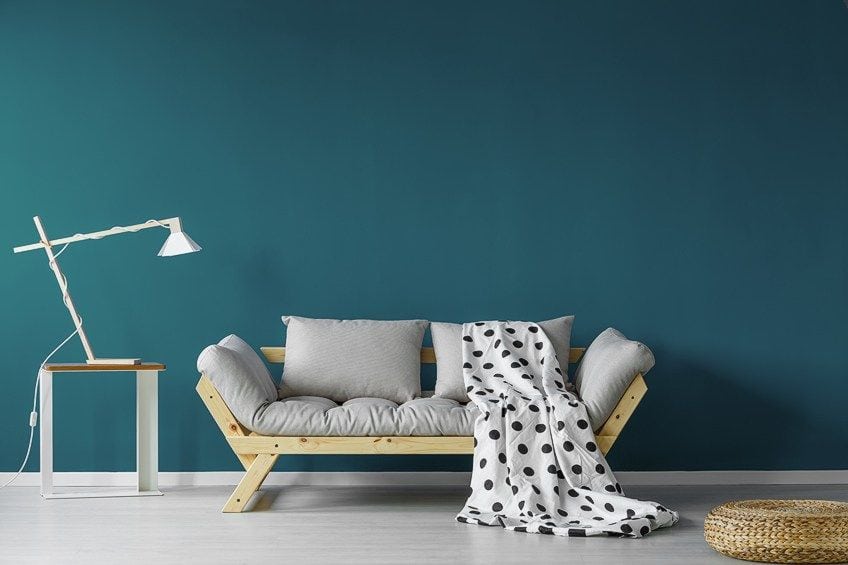
| Shade | Teal Hex Code | CMYK Teal Color Code | RGB Teal Color Code | Teal Color |
| Teal Blue | #367588 | 60, 14, 0, 47 | 54, 117, 136 |
Teal Green
A version of teal with a stronger green influence, lively and natural, like a forest meeting the sea.
| Shade | Teal Hex Code | CMYK Teal Color Code | RGB Teal Color Code | Teal Color |
| Teal Green | #00827F | 100, 0, 3, 49 | 0, 130, 127 |
Tropical Teal
Are you a fan of the tropics? If so, this will be a favorite of yours, for sure! Tropical teal is bold and looks good in nearly any space. Consider painting your foyer with tropical teal to make a fun and inviting, yet relaxing energy for those who enter your home, or office space.
| Shade | Teal Hex Code | CMYK Teal Color Code | RGB Teal Color Code | Teal Color |
| Tropical Teal | #008794 | 100, 9, 0, 42 | 0, 135, 148 |
Trumpet Teal
A bold, resounding teal, like the vibrant blast of a trumpet, commanding attention and radiating confidence.
| Shade | Teal Hex Code | CMYK Teal Color Code | RGB Teal Color Code | Teal Color |
| Trumpet Teal | #5A7D7A | 28, 0, 2, 51 | 90, 125, 122 |
Turquoise
A bright, medium blue-green, like the semi-precious stone, representing healing and protection.
| Shade | Teal Hex Code | CMYK Teal Color Code | RGB Teal Color Code | Teal Color |
| Turquoise | #40E0D0 | 71, 0, 7, 12 | 64, 224, 208 |
Viridian
A deep, blue-green pigment, rich and vivid, often used in art for its intense and stable color.
| Shade | Teal Hex Code | CMYK Teal Color Code | RGB Teal Color Code | Teal Color |
| Viridian | #40826D | 51, 0, 16, 49 | 64, 130, 109 |
The Origin of Teal The Main Teal Shade
The color teal is believed to be named after the markings on a freshwater duck, in the early 20th Century. The color can be found on the duck’s head and wings. Eventually, the Eurasian Teal duck was named after the color we are all familiar with today. The different shades of teal have been popular throughout history. It is the foundation of the Plochere color system and was used by interior designers in the 1950s, which enabled them to incorporate the color teal in more ways than originally imagined.
The Plochere color system includes 1456 colors within its collection. These colors are organized accordingly, similarly to the original color wheel. They are made up of 26 colors that make up the base of the system. All of the colors within the Plochere color system are made by mixing these 26 base colors with a “systematic pigment mixture”.
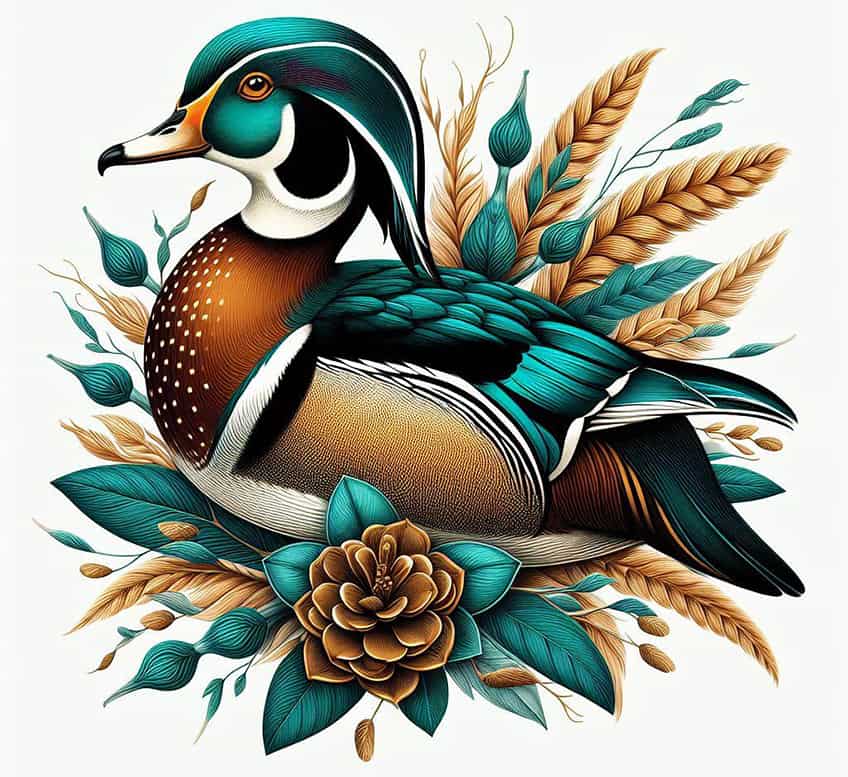
Teal colors were used on some of the first web pages in 1987, which many of you might remember, but many may not. Either way, Teal has been an iconic color within the marketing industry. Crayola created a crayon named Teal blue from 1990 to 2003, which became a favorite amongst children who loved coloring in anything to do with the ocean. The color teal can be found in different country flags, like Sri Lanka, because of the proud energy that it gives off, and as we have said, royalty across the globe have been huge fans of this color, and nobles would adorn themselves with this color.
It has represented sports teams, for example, the Charlotte Hornet basketball team, and the Jacksonville Jaguars football team. That is not all! The Miami Dolphins have a variation of the color teal that they wear which is called Aqua, and another variation of teal which is known as midnight green is worn by the Philadelphia Eagles.
Teal is symbolic in different cultures. For the Tibetans, the color teal is a symbol of infinity, the sky, and the sea, which represents the polarity in our world, yet it shows how everything is still connected and related to each other. For the ancient Egyptians, teal was the color of faith and truth. The nobles in Egyptian culture would paint their faces with the color teal in ceremonious happenstance.
The Psychology Behind Teal
Teal has a tranquil and healing effect on individuals. This color strikes a feeling of independence within those who are exposed to it. The psychology of this color, that brings out such individualistic feelings, also makes one feel a sense of reliability. Those who choose to surround themselves with the subtle combination of blue and green (teal) are unlikely to make impulsive, or rash decisions that they might regret later, and they are more reserved in comparison to those who choose more bright and vibrant colors like orange. Teal represents clarity of the mind, your thoughts, and open communication, so you can freely express yourself without any internal confusion.
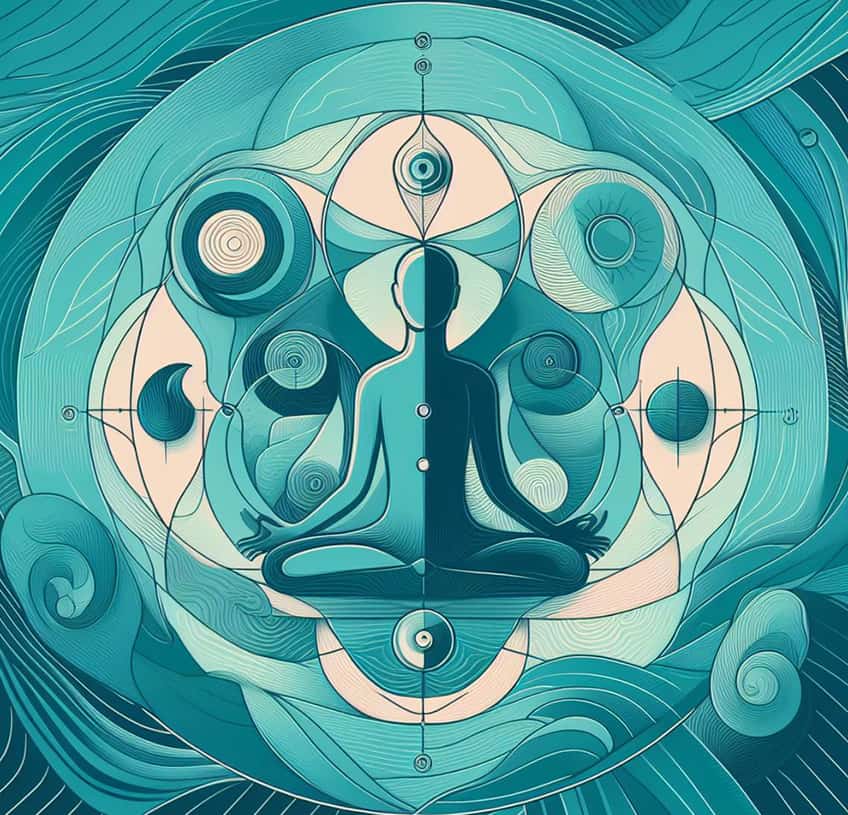
In some cases, the color implies the tendency to overthink and is associated with pretentiousness. It can stir up feelings of trustworthiness, making it great to use in web design, but using it too much can have the opposite effect, instigating a sense of aloofness and unreliability. Any color that is used in excess will seem overwhelming to the person viewing the artwork, webpage, or room that is painted entirely teal. We advise mixing in some neutral colors that can soothe the intensity of the color. Those who are lucky enough to be unaware, the color teal became a color that cancer survivors would wear.
This beautifully deep color is subtle, yet very noticeable, so it does the job of bringing the awareness of cancer back to the attention of others quite nicely.
Teal Shades in Interior Design
Teal is a color that can be more outstanding or subdued depending on how it is used in the living or workspace. Teal can also add to a sophisticated and elegant color palette. Imagine a deep teal velvet couch or pillows, evoking a sense of royal splendor. Then paring it with warm neutral beige and dark woodwork to balance the cool teal shades.
The color pairs well with white and gold for a classic look. This can create a calm, relaxing atmosphere in your space.
You can use the color teal for furniture, walls, and other accessories. It is an immaculate accent color. Because of its tranquilizing effect, it can be added to a neutral setting without it feeling artificial or like it is too “in your face”. Here are a couple of combinations of teal that might inspire you as you decorate your space.
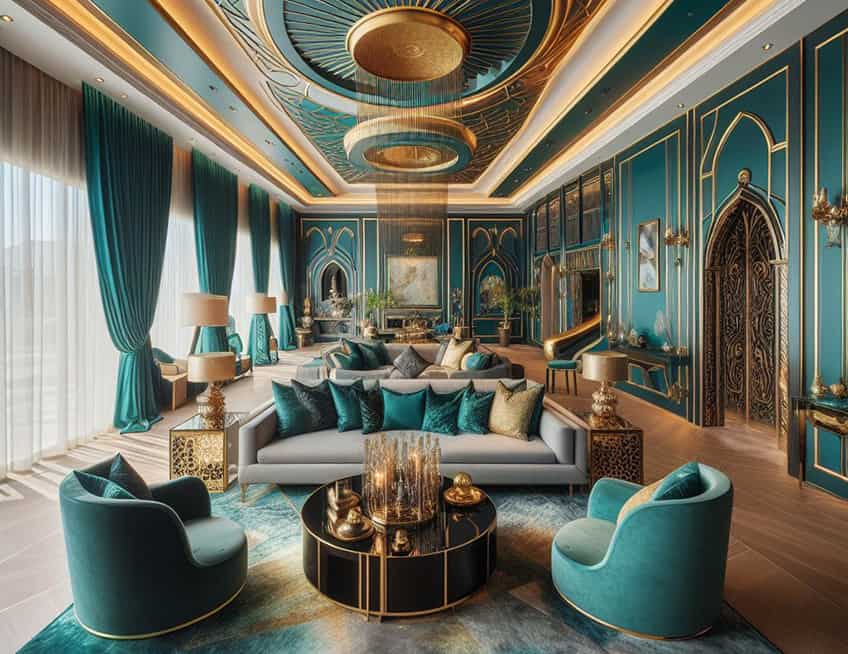
- Teal and yellow. Yellow is a complementary color to teal. Teal is easy on the eyes with the blue undertones, making yellow a great ascent to the space. You could add some interesting visual elements like a throw blanket on your sofa or a lampshade.
- Teal and green. By now, you should know that this combination is monochromatic. In color theory, these two colors go well together.
- Teal and rich brown It is a popular choice when creating a rustic look. For example, the color teal adds interest in rejuvenating the heaviness of brown furniture.
- A brighter shade of teal with navy adds more color to a space. Navy and teal make a refreshing mix of colors to incorporate into your bathroom or kitchen, depending on your preference.
- Teal and pink are a well-balanced combination. Opt for lighter shades of both colors, mixing them with white or subtle gray undertones.
- Teal and gold are known to create elegant spaces. They are both inviting colors, with the gold bringing attention to detail. A teal-painted wall, adorned with golden mirrors or paintings, is a classic look.
- Teal and orange can create a lively and electric look. Both colors are well-saturated and can bring vibrancy to the room.
- Using a classic white and black monochromatic theme, add teal for hints of color. This is great for a bathroom, and you can perfect it by painting most of the walls white and then adding an accent wall with the color teal. This wall could either be plain teal, in whatever shade variation you choose, or it could also be a wallpaper design that is predominantly teal.
- Teal and gold are a regal color combination. The hints of warm and shiny gold add to the element of royalty, and this makes a great combination for wallpaper.
Mixing Acrylic Paint to Achieve Teal Shades
The best way to experiment is to create a color palette of teal as you go along comparing the different shades. You can start with a basic teal that consists of one part green, two parts blue, and half yellow. Add white or black to get the shade you want. You can add a darker blue like, phthalo blue or prompt for a lighter blue. If you are trying to obtain a more vibrant teal, you could add some like emerald green.
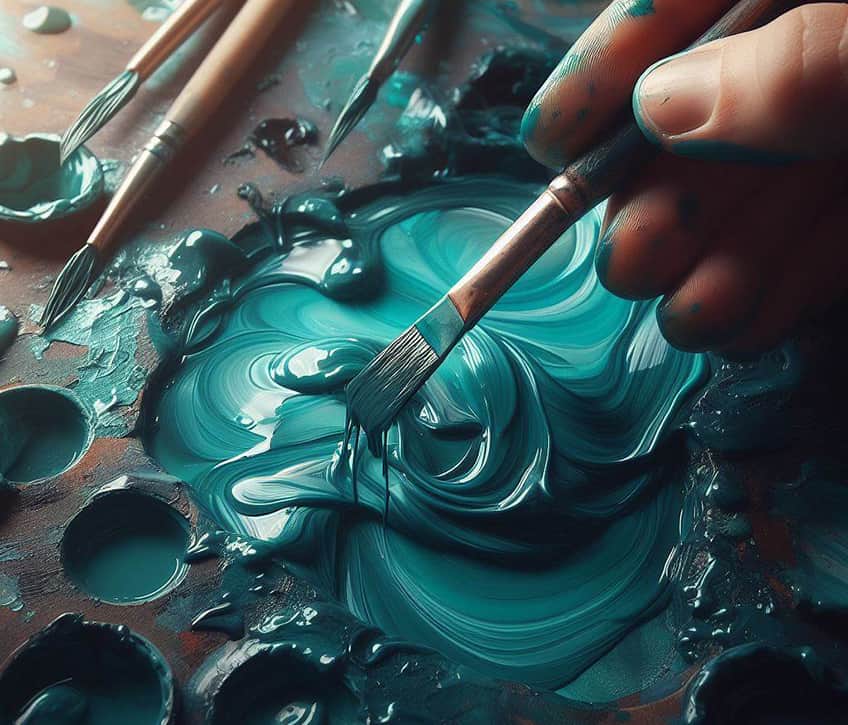
Now that you have read through all of the color descriptions, and learned what the best color combinations are, you will be able to utilize this color more freely. There is an abundance of teal color names and color charts for shades of teal. You can create a teal color palette that can be used in fashion design, interior, art, marketing, and the list goes on. This color is versatile and will surely inspire you to create. We hope that you found this tutorial on the color teal invigorating with information that you can apply to your life, in whatever form you prefer. Happy mixing!
Take a look at our teal color webstory here!
In 2005, Charlene completed her Wellness Diplomas in Therapeutic Aromatherapy and Reflexology from the International School of Reflexology and Meridian Therapy. She worked for a company offering corporate wellness programs for a couple of years, before opening up her own therapy practice. It was in 2015 that a friend, who was a digital marketer, asked her to join her company as a content creator, and this is where she found her excitement for writing.
Since joining the content writing world, she has gained a lot of experience over the years writing on a diverse selection of topics, from beauty, health, wellness, travel, and more. Due to various circumstances, she had to close her therapy practice and is now a full-time freelance writer. Being a creative person, she could not pass up the opportunity to contribute to the Art in Context team, where is was in her element, writing about a variety of art and craft topics. Contributing articles for over three years now, her knowledge in this area has grown, and she has gotten to explore her creativity and improve her research and writing skills.
Charlene Lewis has been working for artincontext.org since the relaunch in 2020. She is an experienced writer and mainly focuses on the topics of color theory, painting and drawing.
Learn more about Charlene Lewis and the Art in Context Team.
Cite this Article
Charlene, Lewis, “38 Shades of Teal Color – Get Inspired by These Tones.” Art in Context. January 13, 2022. URL: https://artincontext.org/shades-of-teal/
Lewis, C. (2022, 13 January). 38 Shades of Teal Color – Get Inspired by These Tones. Art in Context. https://artincontext.org/shades-of-teal/
Lewis, Charlene. “38 Shades of Teal Color – Get Inspired by These Tones.” Art in Context, January 13, 2022. https://artincontext.org/shades-of-teal/.


